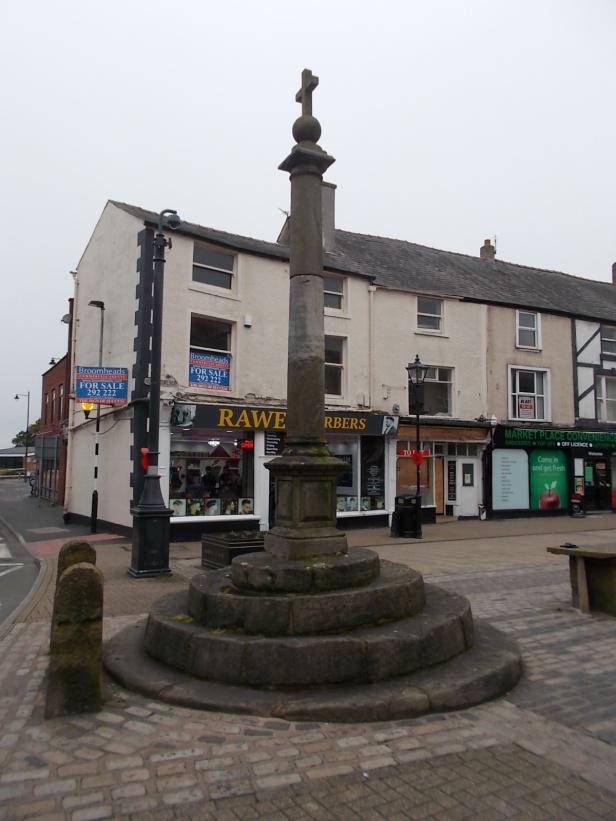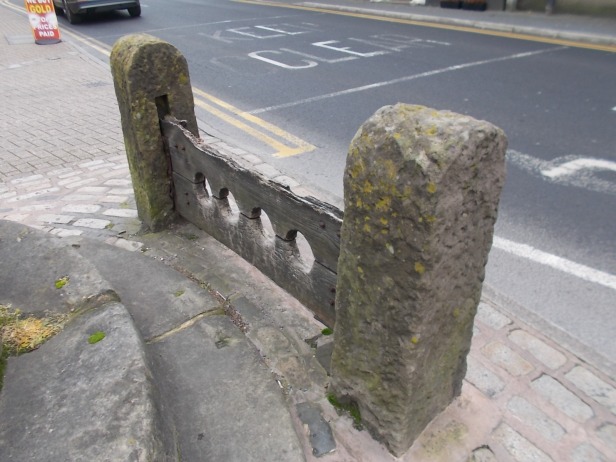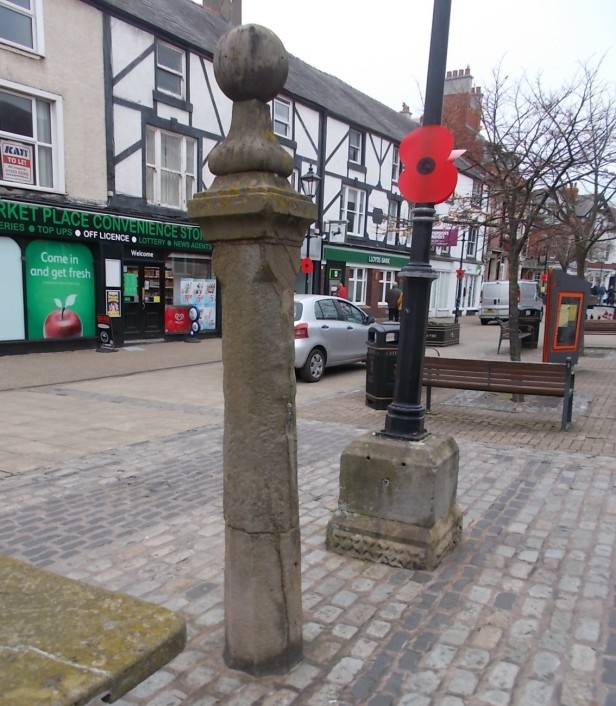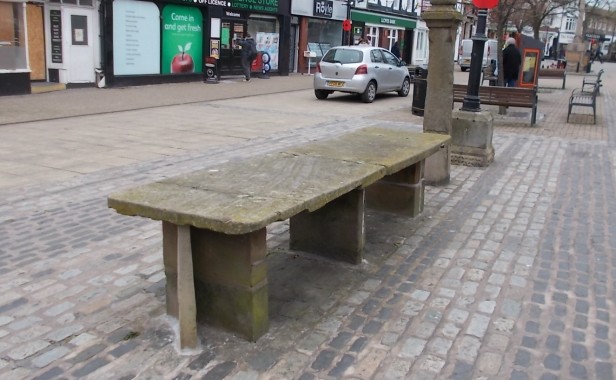Poulton-le-Fylde market square contains a number of historical artefacts that date from Stuart and Georgian times. These are in a good state of preservation and are well worth a look.
Poulton Market Cross
The most prominent is the large market cross. It is similar in style to those at nearby Garstang and Churchtown. At the base are four circular steps on which the monument rests. On these is a square pedestal and a Tuscan style column rests on top of this. The whole edifice is topped off with a cross on its peak. The monument looks cobbled together from different eras, and the oldest part is tentatively dated to the 1600s.

Poulton Stocks
Next to the cross are the town stocks. These have been dated to the 1700s, and certainly this kind of punishment was still in use then. They were removed in the 1930s temporarily and then subsequently reinstated. Local author, Brian Hughes, in his book The Fylde & Wyre Antiquarian, claims that in the 1970s the stocks had been hit so many times by cars that they were again removed. He suggests that the stone pillars now in place are actually farm gate posts from a nearby field. To back up his claim he publishes an Edwardian photograph in his book which shows the stocks to be taller and have square tops. The ones in place now are certainly shorter and have curved tops, but whether they are ‘new’ or merely the old ones after being repaired, we cannot say.

Poulton Whipping Post
The most unusual of the curiosities is the whipping post. Possibly from the 1700s, it is a stone column with a cornice and ball finial on top. Many towns would have had one of these although most now have vanished, leaving the one at Poulton a rare survivor.

Poulton Fish Stones
The fish stones are of an unknown date, possibly 1700s. Two flat slabs on raised legs, they are similar to the ones at Cartmel. Many northern towns used to have these, but not many are still in place. Interestingly, in contrast to these straight table-like ones, the ones at Kirkham Market are curved. Some sources claim that fish stones are where the fishmonger would lay out their fish to be sold, but others state that they were a place where deals were struck in the marketplace.

Poulton Market in the 1700s and 1800s
In 1732, a devastating fire broke out in the market place, at the funeral of Geoffrey Hornby in St Chad’s Church. Mourners were carrying taper candles at the service. It’s thought that a boy accidently set fire with a candle to a low thatched roof of one of the houses on the west side of the square. The wind carried the flame from roof to roof and soon the thatch of the whole row of these late Medieval cottages was aflame. Reports at the time said the flames were so fierce that the hat bands of the mourners were scorched by sparks from the fire.
The whole row was completely burned down and a public appeal across Britain managed to raise over a thousand pounds for a rebuild. The replacement buildings were a three-storey terraced row, which were later modernised in the late 1800s. The new buildings were made from brick and slate ensuring that they were much more fire resistant.
In the 1700s, corn fairs were held every Monday. Seasonal markets for cattle and cloth occurred in February, April and November. During the early 1800s, goods were being brought in through the nearby ports of Skippool and Wardleys Creek. It was a truly international market. From Russia came tallow, timber from America, flax from Ireland and the Baltic regions. Poulton imported local produce such as coal from Preston and limestone from Ulverston, some 500 tonnes a year in 1806. It also imported large quantities of oats from Liverpool, Ulverston, Whitehaven, Wigtown, Dumfries and Kirkcudbright, Dumfries.
Site visited by A. and S. Bowden 2020
Access
The monuments can be seen at any time in the market square
Nearby, just a minute away, St Chad’s Church
References
poulton-le-fylde-hcs.co.uk/page52.html
visitpoulton-le-fylde.co.uk/about/history/history-of-poulton-le-fylde/
visitcleveleys.co.uk/recreation-entertainment/explore/skippool/
historicengland.org.uk/listing/the-list/list-entry/1072406
visitfyldecoast.info/about-the-fylde-coast/history/
en.wikipedia.org/wiki/Listed_buildings_in_Poulton-le-Fylde
Comments are closed.